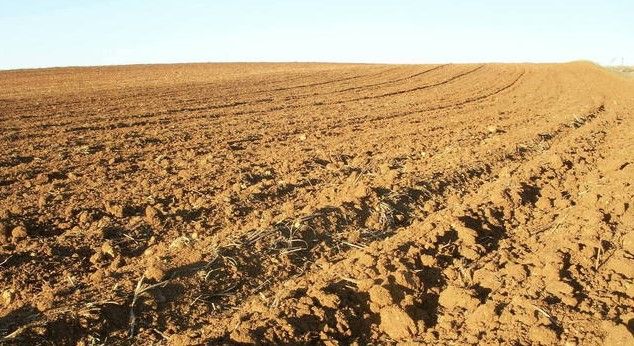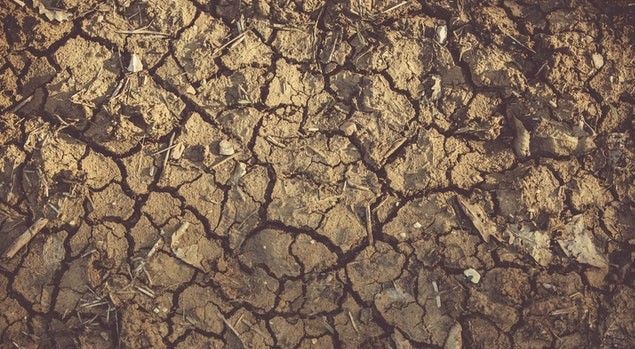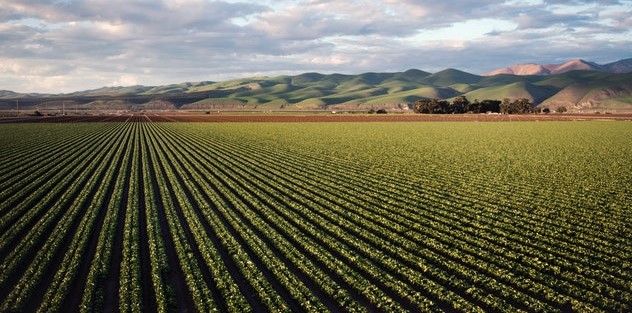It is perhaps a constant surprise to farmers that headlines are lacking the news that the world’s soil is losing phosphorus.
Without phosphorus in the soil, plants cannot grow. Without it, everything dies.
Now researchers have found that on almost every continent on Earth, the soil is losing phosphorus, even in regions where phosphate fertilisers are being added.
The study was a massive undertaking to examine soil data from all over the world, and was conducted by a joint team from the University of Basel, France's ISPA, Bordeaux Sciences Agro, the UK's Centre for Ecology and Hydrology, the Kangwon National University in South Korea, and the European Commission's Joint Research Centre.

While the nature of the study means that the team can only conclude estimates, they are confident in the accuracy of their conclusions drawn from high-resolution global data on the phosphorus content of soils compared with local soil erosion rates.
Specifically, the study calculated that worldwide, farmland will experience a fall in phosphorus content of between 4–19 kg per hectare per year.
Surprisingly, half of these losses will be caused by water erosion of soil. As the Basel University press release highlights, “So far, experts have mainly reported losses due to a lack of recycling, food and feed waste, and general mismanagement of phosphorus resources.”
“It was well known that erosion played a role,” said the study’s lead author Prof. Christine Alewell. “How big this is, has never been quantified…”

While global demand for phosphate fertilisers is stagnating in Europe, North America, and Australia, population growth in other regions is causing an overall growth in demand for phosphorus input. A situation that is growing in urgency, as a shortage of land has led to more people farming poorer quality soils. At the same time, an increase in the global standard of living has meant that more people are eating meat – placing further strain on required returns from arable land.
This has naturally impacted fertilizer markets, with the study noting that, “growing demand for phosphate fertilizer globally has caused an increase in the cost of rock phosphate from about $80 per U.S. ton in 1961 to $700 per ton in 2015 (with large year-to-year fluctuations).”

Although, perhaps more worryingly, is the impact on everyone if the long-term trend of phosphorus reduction continues.
As the report, now published in the journal Nature, states, “Soil phosphorus (P) loss from agricultural systems will limit food and feed production in the future…The world’s soils are currently being depleted in P in spite of high chemical fertilizer input. Africa (not being able to afford the high costs of chemical fertilizer) as well as South America (due to non-efficient organic P management) and Eastern Europe (for a combination of the two previous reasons) have the highest P depletion rates.”
“This is actually a paradox,” says Prof. Alewell, “since Africa has the largest geological phosphorus deposits. The phosphorus obtained there is exported and costs farmers in African countries many times what, for example, European farmers pay for it.”
With eutrophication of waterways and ‘dead zones’ in seas as a result of excessive fertilizer use, simply increasing phosphate fertilizer use is not sustainable.

Consequently, politicians working have been working with the agricultural sector to find ways to reduce the negative effects of fertilizer use while still increasing food production.
As a report by the fertiliser industry trade body, Safer Phosphates, states, “In the European Commission's Communication on the Farm to Fork Strategy, the excess of nutrients in the environment due to overuse and poor absorption by plants is highlighted as a key target, with a proposed 20% reduction on the use of fertilisers in the EU by 2030.”
Specifically stating that EU policy must include “measures to address phosphate waste”, before adding that “the development and implementation of nutrient recycling is essential”, believing that it should be a key role of governments to “support new technologies so that phosphorus can be recovered from the environment and become circular, rather than scarce.”
The good news is that reversing the trend of phosphorus depletion is possible, as the original study suggests; “… a 50% reduction in food and feed waste combined with a 50% reduction in production and consumption of animal products, will allow a 100% conversion to organic agriculture, thus fostering sustainable agriculture and minimizing agricultural production related problems such as greenhouse gas production, biodiversity loss, eutrophication of waters and eco-toxicological related issues. However, the switch to 100% organic production globally would only be possible if rock phosphate was used as a mineral P-fertilizer in organic agriculture with a similar magnitude as it is used today in conventional agriculture.”
Solutions are therefore available. Solutions that must be acted upon. For it is a problem that needs to be solved.
As Prof. Alewell, makes perfectly clear, “95 percent of our food is produced directly or indirectly through plant growth on the soil. The gradual loss of the plant nutrient phosphorus therefore affects all people and societies.”
Photo credit: Bishnu Sarangi from Pixabay, James Frid, Jason Schuller from StockSnap, Tim Mossholder from Pexels, & ayhan yılmaz from FreeImages
